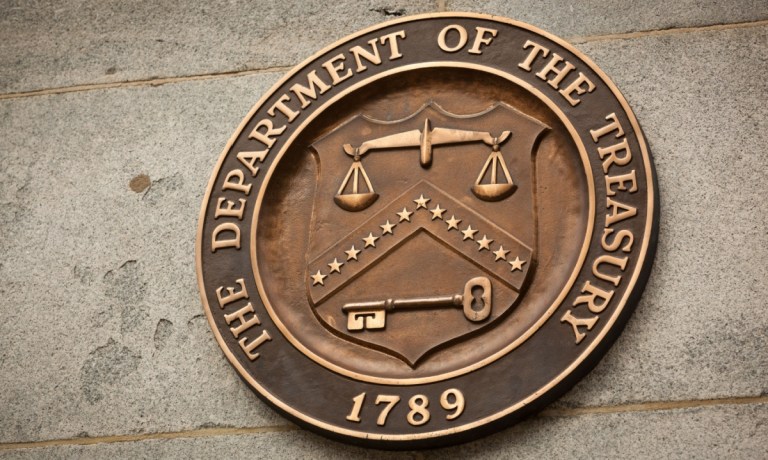The U.S. is working to keep the dollar as the dominant currency in global usage at a time when new cross-border payment arrangements are emerging, Department of the Treasury Assistant Secretary for International Finance Brent Neiman said Tuesday (Nov. 19).
In remarks prepared for delivery at a conference hosted by the Federal Reserve Bank of New York, Neiman said the continued dominance of the dollar would benefit America, its allies and its partners.
“To achieve that vision, the United States is working to advance payment rails innovation, implement sound regulatory frameworks internationally and at home, and promote international standards that improve safety and address illicit finance risks,” Neiman said in the remarks.
In the realm of payments innovation, Neiman pointed to the Federal Reserve’s participation in the Bank for International Settlements’ Project Agorá, which is exploring the integration of tokenized central bank and commercial bank money; the Fed’s collaboration with the Monetary Authority of Singapore on Project Cedar x Ubin+, which explored improvements to multi-currency wholesale cross-border payments; and the efforts of Treasury and other agencies to enhance bilateral payment system connectivity.
When it comes to regulatory frameworks, the U.S. is working with the private sector and foreign partners, Neiman said. For example, the U.S. is supporting the G20 Roadmap to Enhance Cross-Border Payments, aiming to allow more financial data to move across borders.
The U.S. is also supporting international standards and compliance regimes that ensure the stability of payments and the financial system, Neiman said, adding that these protect citizens around the world from fraud and other illicit finance threats.
Advertisement: Scroll to Continue
“I believe the United States must lead when it comes to cross-border payments to maximize the chances that any new systems with significant international usage reach the quality and standards we prefer when it comes to governance and support for financial stability,” Neiman said.
It was reported Oct. 11 that Russia aimed to create a new system for cross-border payments between BRICS countries, which include Brazil, Russia, India, China and South Africa, as well as newer members Iran, the United Arab Emirates (UAE), Ethiopia and Egypt.
On Oct. 25, it was reported that Russian President Vladimir Putin said there are no plans to create a new system and that the existing financial messaging systems run by BRICS central banks could be used to facilitate payments between the countries in national currencies.




